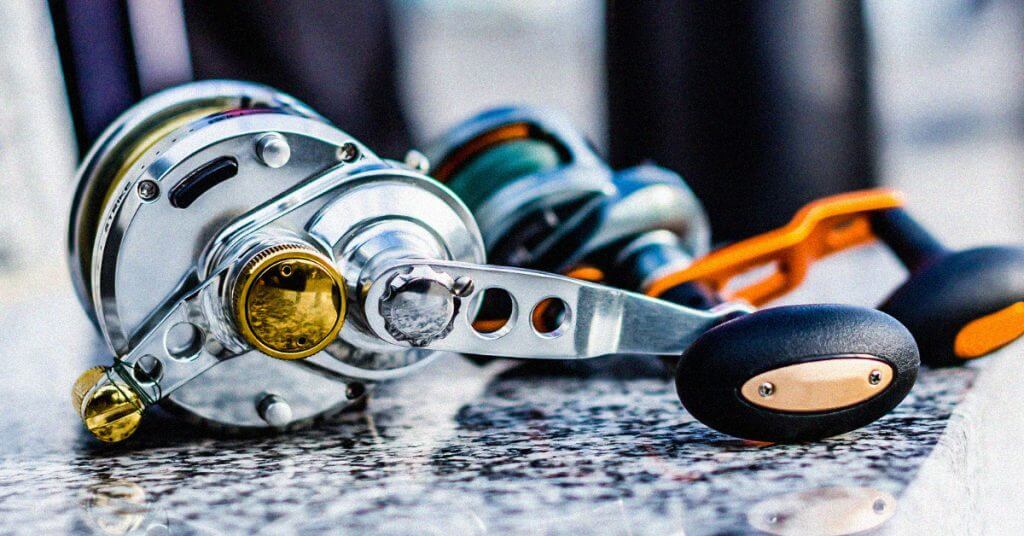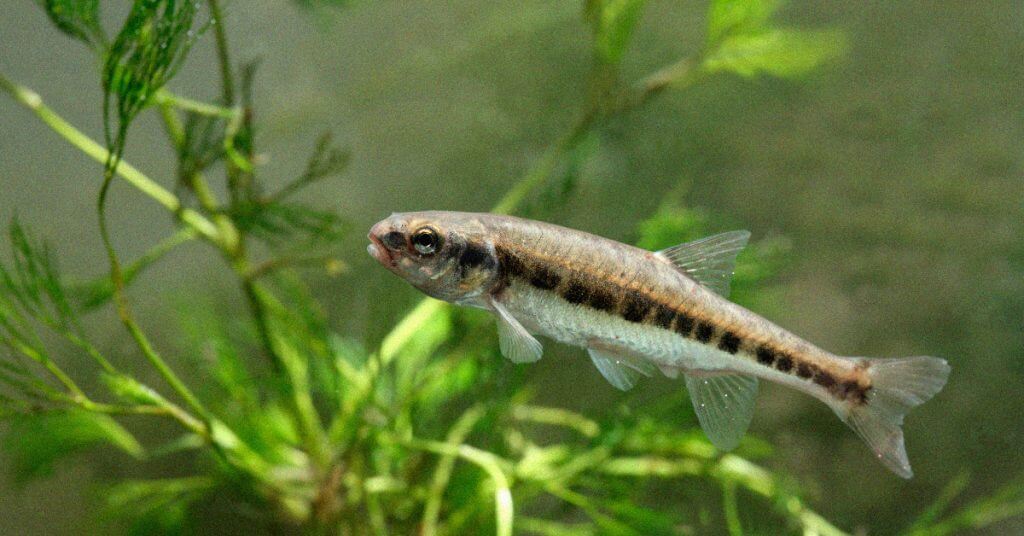There is some confusion when identifying black bass species, largemouth vs smallmouth bass. From color to size, the non-angler and beginners are likely to confuse them.
My goal is to help you know the key differences between these fish so you can instantly identify what species you just caught, no matter your level of bass fishing experience.
You will learn the distinct differences between smallmouth and largemouth bass and gain an arsenal of fishing tips to help you catch more.
So, without further ado, let’s dive into the ultimate green bass rivalry.
Anglers.com Community Coordinator Wes Littlefield explains the differences between largemouth vs smallmouth bass in this YouTube video.
- How To Tell Largemouth From Smallmouth
- Where to find Largemouth vs. Smallmouth Bass
- Best Fishing Seasons for Smallmouth vs Largemouth Bass
- 3 Biggest Tips for Fishing Largemouth
- 3 Biggest Tips for Fishing Smallmouth
- Frequently asked questions
- What Tastes Better: Smallmouth Bass or Largemouth Bass?
- Are Smallmouths More Aggressive than Largemouths?
- Last Cast
How To Tell Largemouth From Smallmouth
It’s easy to confuse largemouth and smallmouth because they’re found in many of the same waterways and are part of the sunfish family.
However, there is an obvious difference that you can use to identify both species.
Mouth Size

Largemouth bass have big mouths. The jaws of largemouth bass open wider, extending past the eyes.
Smallmouth bass have smaller mouths. Smallmouth bass jaws are in line with eyes and look more proportionate to the body size.
The difference is noticeable if you hold the two fish side by side.
Appearance
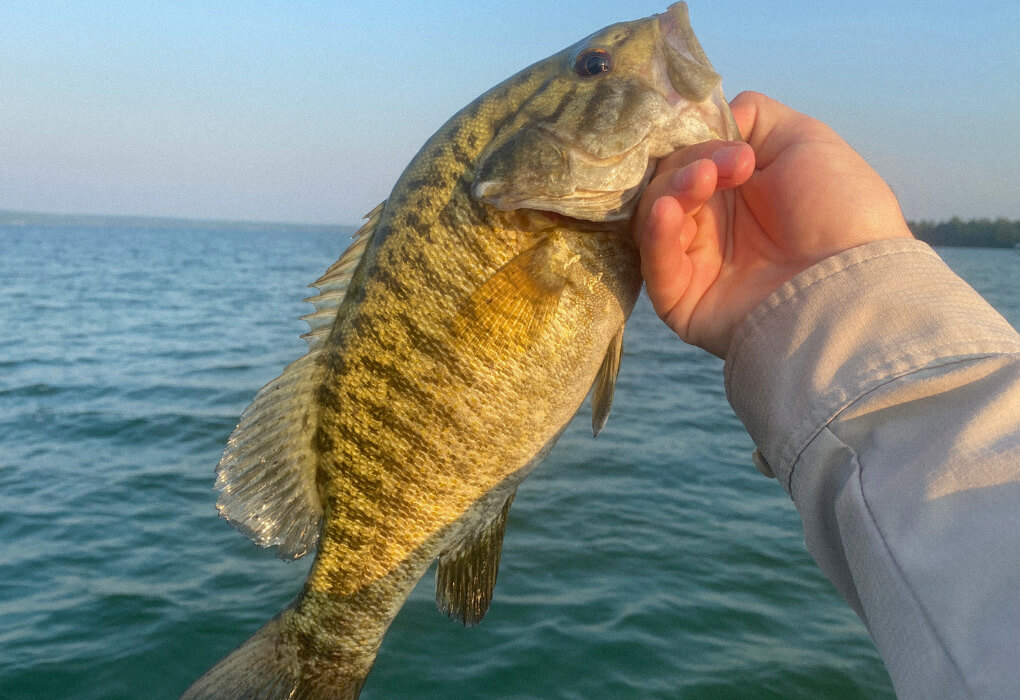
Large vs. smallmouth bass are different in the patterns on their body.
Largemouths show a speckled body with a dark green horizontal line from their gills to their tails. They’re often a lighter green compared to smallmouths but not always.
Smallmouths have a darker green body color with vertical stripes or blotches. Sometimes they’re a brownish color; this depends on the water conditions and the food they’re eating.
Both fish have different dorsal fins.
Largemouths have a deep notch in their dorsals, almost appearing as two separate fins.
Smallmouths have one long dorsal fin that appears to show no separation.
The tails between the two are alike with little color difference. It is common to see smallmouths with a darker color near the end of the tail.
Weight and Length
Other than jaw sizes, anglers judge the difference by their weight and length. Largemouths grow big, up to thirty inches. Smallmouth bass tend to stay near twenty inches.
It isn’t uncommon for both fish to push their limits in weight. Anglers often catch largies weighing more than ten pounds. The world record largemouth weighed over 22 lbs.
Whereas a ten-pound smallie is a record in many states, considering the world record is just over 11 lbs.
Where to find Largemouth vs. Smallmouth Bass
The locations or habitats overlap quite a bit across North America, but each species has its preferences. We will discuss where to find largemouth bass vs. smallmouth bass below.
Fishing Location
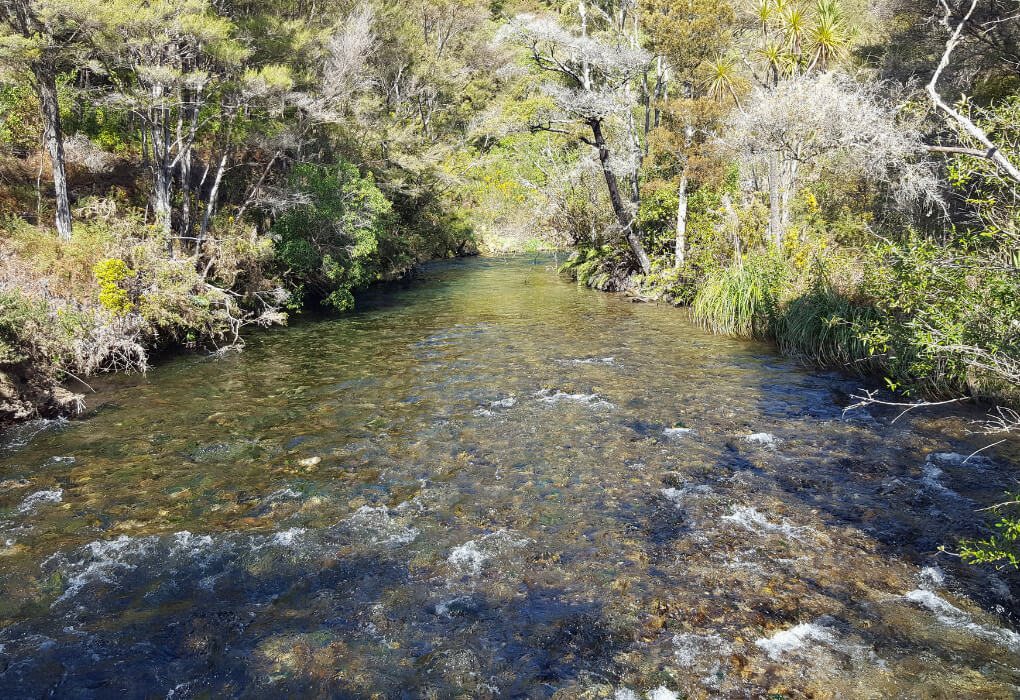
Smallmouths occupy the waters of most states like Mississippi to the Great Lakes, but they thrive in northern locations like Lake Erie. They prefer cooler water temperatures and are more often found in fast-moving water.
Largemouths are adaptive and thrive well in cold and warm environments. You will find them in almost all lakes and reservoirs, from Florida to Maine to California.
Largemouths are more prominent where the weather is mild or warm and in murky water conditions.
Habitat preference

Smallmouth prefer clear water with light cover and space to swim. They will run for cover when they feel threatened but spend most of their time around deep rocky areas and hunting small baitfish on shallow flats and in open water.
Largemouth are better suited for the shallow water of muddy shores, blending in with the murky habitat. However, you can find them around rocks, stumps, and in open water at certain times of the year.
Largies love fallen trees, lily pads, and other water vegetation. Vegetation provides them cover to sneak up on their prey and hide from predators.
If you want to find either species quickly, get yourself a fish finder.
While you won’t be able to directly identify which species you’re seeing on screen, with enough time on the water, you’ll be able to make an educated guess based on how the fish are positioned and behaving.
Best Fishing Seasons for Smallmouth vs Largemouth Bass
Now you know where to find largemouth bass vs. smallmouth bass, but do you know which season is the best for each of them?
The season determines the locations you’ll find largemouth vs. smallmouth bass.
Largemouths are more active throughout the warmer months. They prefer warmer water temperatures in the late spring and early summer months.
If the weather is too hot, they will seek deeper water that is cooler. On days with more wind, you will find them moving for cover.
Smallmouth bass prefer mild temperatures. Anglers love targeting smallies of northern waters. During the spring and autumn months, they are everywhere.
When the weather is cooler, the fish are more active and make for an easier catch than during summer heat.
3 Biggest Tips for Fishing Largemouth

Do you want to catch more fish when largemouth bass fishing in less time? If so, check out our best tips:
Use the right lure!
Largemouth bass love ambushing wounded prey.
So, pick out a jig, crankbait, plastic worm, or swimbait from your tackle box. Cast it past the area of the target and work it through. Once the fish see it, they will strike if they’re hungry.
Don’t fish in the wrong conditions.
Largemouths are cold-blooded and thrive in warm waters.
If you target them in colder months, they are less to attack your moving bait as they feel lethargic.
Target the best areas!
Largemouth bass are found throughout most fisheries.
However, there are specific areas where more bass congregate, and those are the areas to target. Such as ledges, docks, brush piles, thick cover, and points.
3 Biggest Tips for Fishing Smallmouth
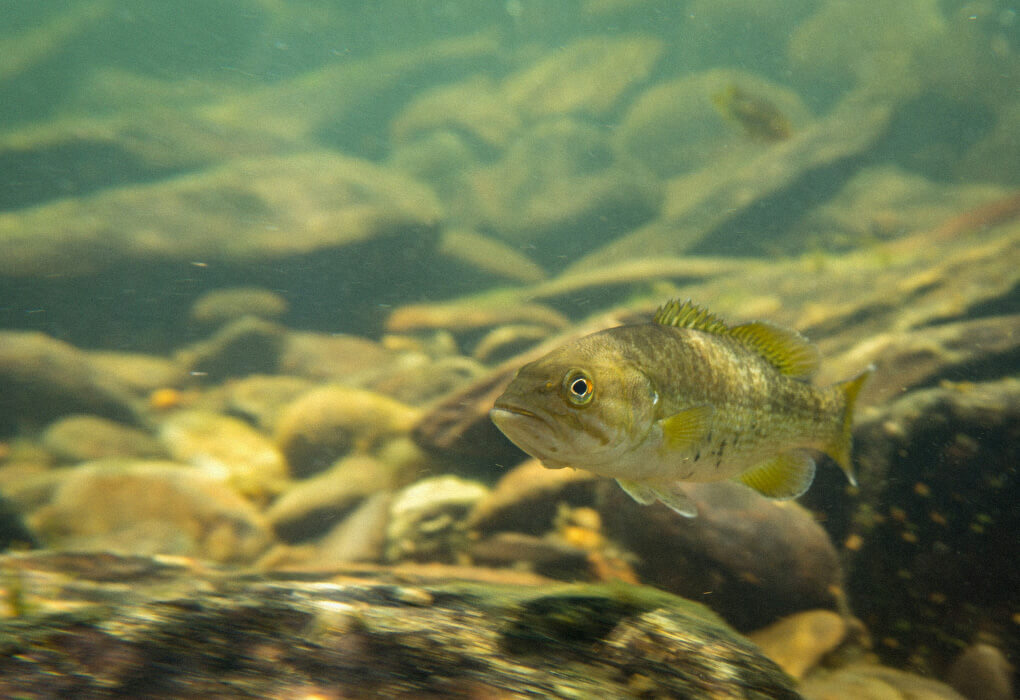
Do you want to catch more fish than other anglers while smallmouth bass fishing? Check out our three biggest tips that guarantee success:
Target them when spawning!
Smallmouth bass are aggressive fish and will do anything to protect their beds.
Throw any lure at them and hold onto your rod as they attack any threat to their territory.
Ditch the thick fishing line!
Smallmouths have incredible eyesight. If you are fishing with a thick leader, good luck!
Your best bet is to fish with light gear; a quality bass reel, strong rod, and thin invisible leader.
Go rocky or go home!
Brown bass love rock piles. Troll to an area that shows a rocky bottom on your fish finder.
Rocks provide anglers with the best chance of catching smallmouth bass.
Frequently asked questions
To make your next fishing experience monumental, we outline the most common questions anglers ask us.
When is the spawning season for Largemouths vs. Smallmouths?
The spawning season for largemouths vs. smallmouths overlaps from May to June, depending on where you’re located.
The ideal spawning water temperature for largemouths is 55 to 65 degrees.
The ideal spawning water temperature for smallmouths is 60 degrees.
How long does a bass live?
Bass live 6 to 16 years.
The life expectancy of bass varies depending on different factors.
The majority of smallmouths will live for 6 to 12 years.
Largemouths will outlive smallmouths, reaching an average life span of 16 years.
What is better, live bait or artificial?
Live bait is better than artificial, in most cases, because you’re matching their natural food.
However, most bass fishing tournaments do not allow the use of live bait.
If you ask a fisherman which method is better, live bait or artificial lures, you will get mixed answers.
Live bait makes for easy fishing as you don’t need to do much. Place bait on the hook and throw it in the water to do the rest.
Artificial lures provide anglers with the opportunity to present their skills. Each fisherman using artificial bait can control how they attract bass.
How do you catch a Bass in colder water?
Slow down your presentation to catch a bass in colder water.
Fishing for Bass is more challenging in colder weather. During late autumn and winter, bass are more lethargic. They become less energetic and willing to chase down their prey.
Target them with a slower retrieve and try to run the bait just above their face.
What other types of Bass are popular?
Other types of bass that are popular are spotted bass, peacock bass, striped bass, white bass, and hybrid bass.
If you are fishing freshwater bass in the United States, you can target different species.
There are a handful of other bass species present throughout the country.
If you are in the north, look for smallmouth bass, rock bass, northern spotted bass, and northern largemouth bass.
If you are in the south, look for Florida-strained largemouths, peacock bass, redeye bass, Chattahoochie bass, and shoal bass.
Will Bass eat other Bass?
Yes, bass eat other bass.
In this world, it’s all about survival. If a largemouth or smallmouth bass is hungry, it will eat anything they presume to be edible.
It isn’t uncommon to see bass eating other smaller bass, especially when food is scarce.
What Tastes Better: Smallmouth Bass or Largemouth Bass?
Freshwater bass makes for a tasty meal despite saltwater fish making it to the dinner table more.
You will find smallmouths most of the time on the menu compared to largemouths. Smallies are lighter, more delicate, and less fishy tasting.
If you desire a fish with a less overwhelming smell and taste, then smallmouths are the perfect meal for you.
Largemouths are edible but less popular among the average fish eater. Their flesh is a lot stronger than smallies but not as potent as other freshwater fish. The benefit of eating largemouth bass is the larger fillets, and it’s easier to spot the bones.
Nonetheless, bass makes for a great meal if you prepare it with the right ingredients. I’ve eaten both and have no complaints about either!
Are Smallmouths More Aggressive than Largemouths?

If you ask me, I will say all bass have aggressive characteristics. Anglers provoke their instinctual aggressiveness, especially during the spawning season, with lures.
Both largemouth bass and smallmouths tend to show more aggression during autumn. As the weather begins to drop and food sources become more scarce, the fish compete for their next meal.
With winter soon approaching, each fish will search for food all day long to bulk up.
In the shallow waters, male largemouths take on the role of protecting the eggs and young. As they watch over them day and night, they rarely eat.
Once the young are ready to move away from the nest, the fathers become more aggressive to gain back the weight they’ve lost while protecting their offspring.
Smallmouths will eat anything (sometimes biting off more than they can chew). Anglers consider these fish hard fighters.
We, as anglers, are quick to give smallmouths the title as the harder fighting and more aggressive bass.
The more aggressive nature of smallmouth makes them easier to catch in most circumstances.
Last Cast
Being able to quickly identify the differences between largemouth vs smallmouth bass is critical for obeying fishing regulations, as each species has different size restrictions.
In general, largemouth will be bigger and have a larger mouth, while smallies tend to be darker green or brown.
Despite bucket mouths weighing more, smallmouths are more aggressive and put up a better fight.
Which fish species do you prefer to fish for, largemouth or smallmouth?


